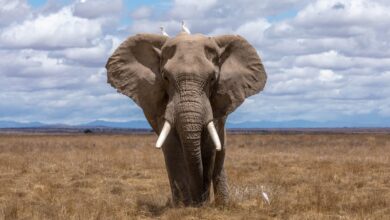By publishing their study in the journal Scientific Reports on January 18, 2021, the German-Madagascan team of scientists officially welcomed the newest members of the reptile club. The multinational team of biologists discovered new species of chameleon, potentially the tiniest in the word which they named Brookesia nana or nano-chameleon. Northern Madagascar played host to the discovery of two tiny lizards, one male and one female whose size is about half an inch (13.5 mm) long. This makes the species the smallest of all the roughly 11,500 known species of reptiles on the planet.
Related Articles
Check Also
Close
-
Giant Endangered Galapagos Tortoises20 August 2021




